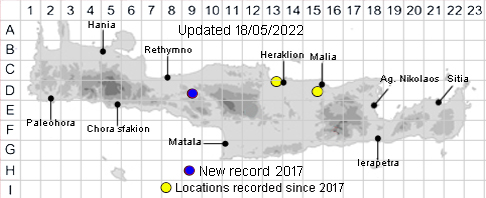
SPECIES DESCRIPTION
ECLIPTA PROSTRATA
Family and Genus:- See- COMPOSITAE
Common Names:- None
Meaning:- Eclipta (Gr) Deficient (has few receptacular scales).
Prostrata (L) Lying flat but not rooting, prostrate.
General description:- Much-branched annual.
Stems:-
1) 20-90 cm.strigose.
Leaves:-
1) 4-13 x 0·8-2 cm, oblong to lanceolate, remotely serrate, acute, sessile or the
lower petiolate.
Flowers:-
1) Capitula, small, hemispherical, axillary.
2) Involucral bracts, c. 5 mm, campanulate.
3) Phyllaries, herbaceous, exceeding the florets.
4) Receptacular, scales setaceous, ciliate at the apex.
5) Ligules, c. 6 mm, white.
Fruit:-
1) Achenes, oblong, laterally compressed.
2) Pappus, with minute teeth.
Habitat:- Estuaries, rice-fields and other wet places near the sea.
Distribution:- Probably native in tropical South America, widely naturalised in
tropical and warm-temperate regions including SW Asia. Recently reported from a
few localities in S. Greece. Remains rare across the Aegean and previously
unrecorded from Crete, until discovered by Marinos Gogolos in the area of Patsos
Gorge west Crete.
Flowering time:- Autumn and winter.
Photos by:- Marinos Gogolos
